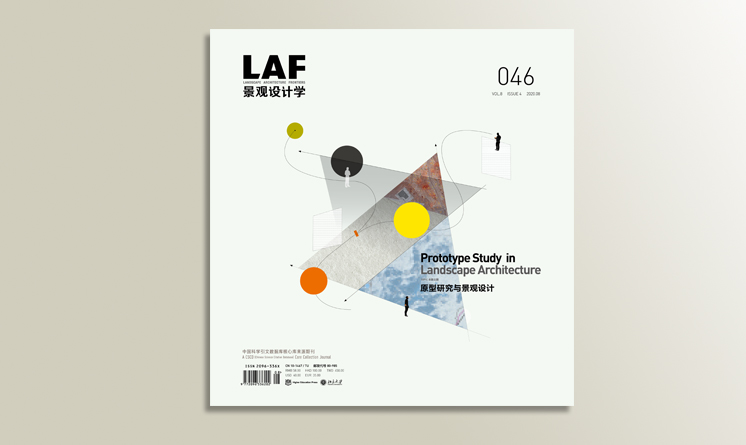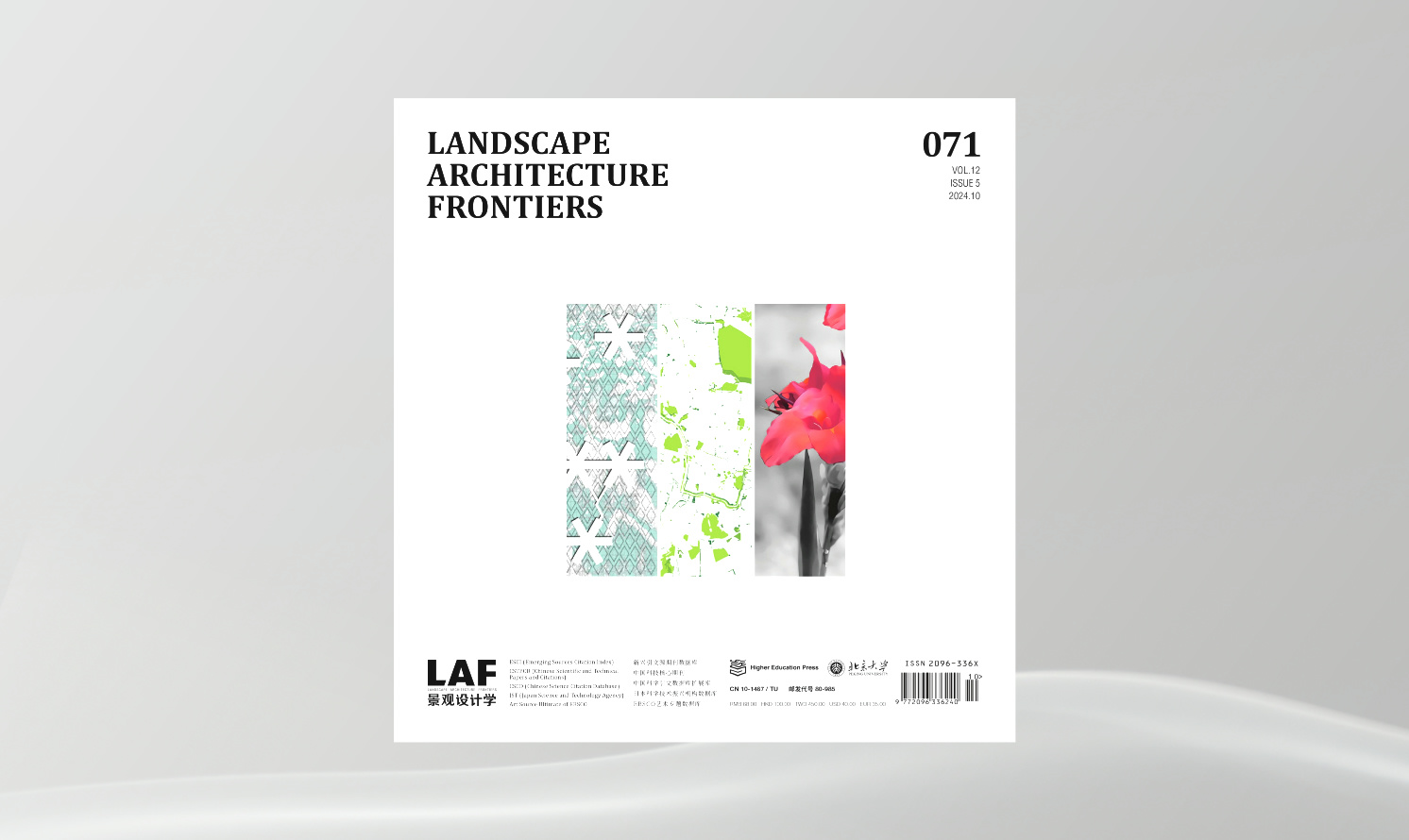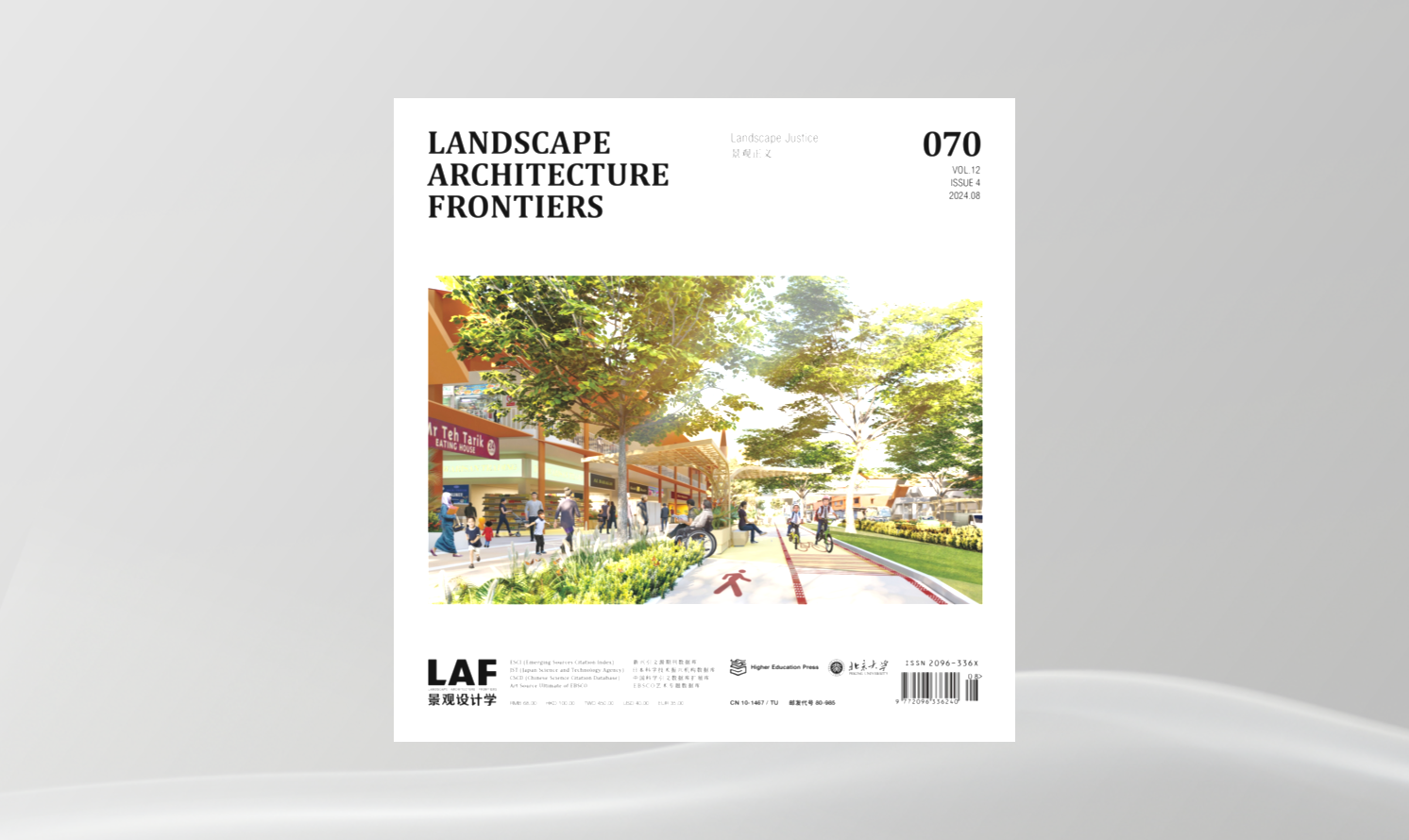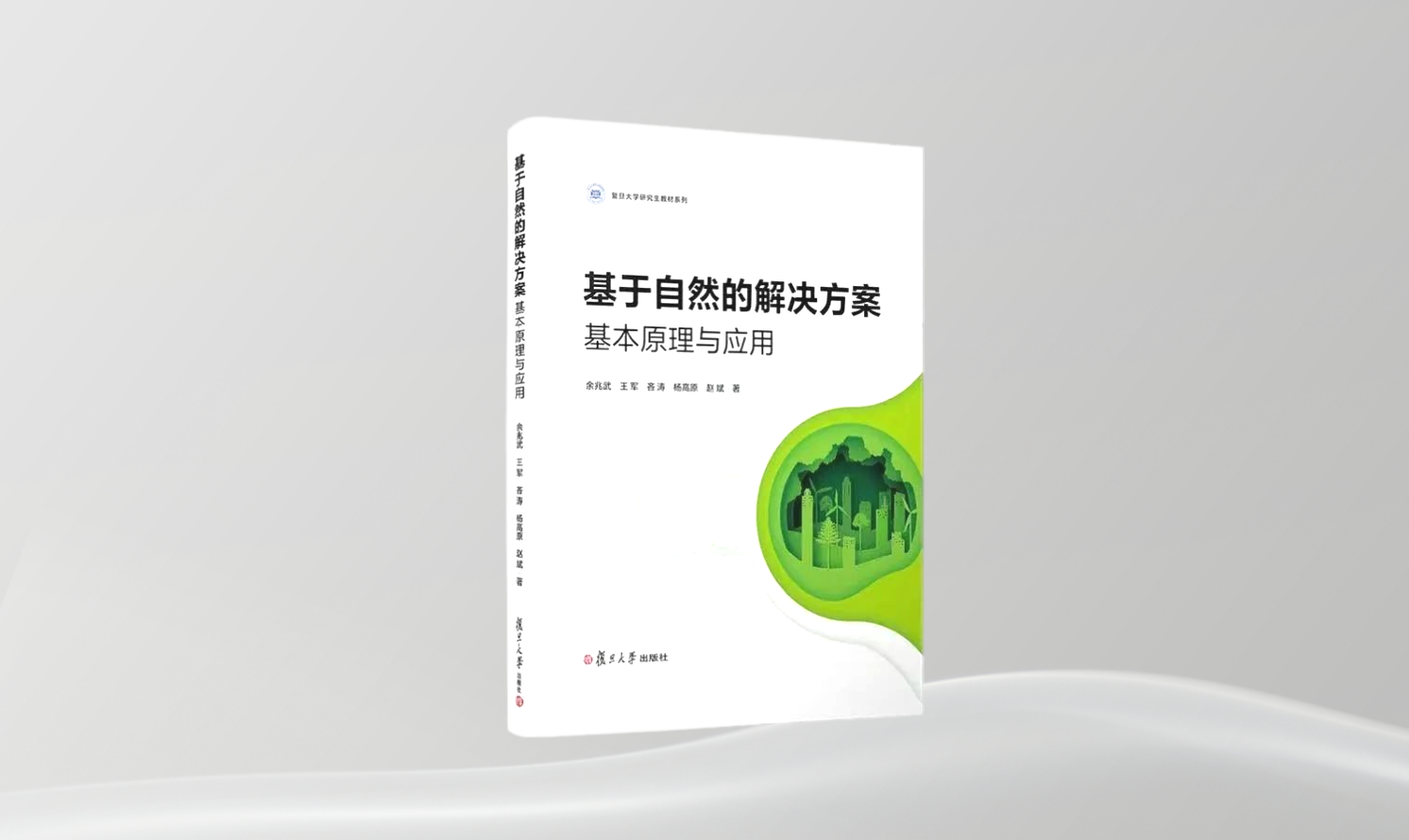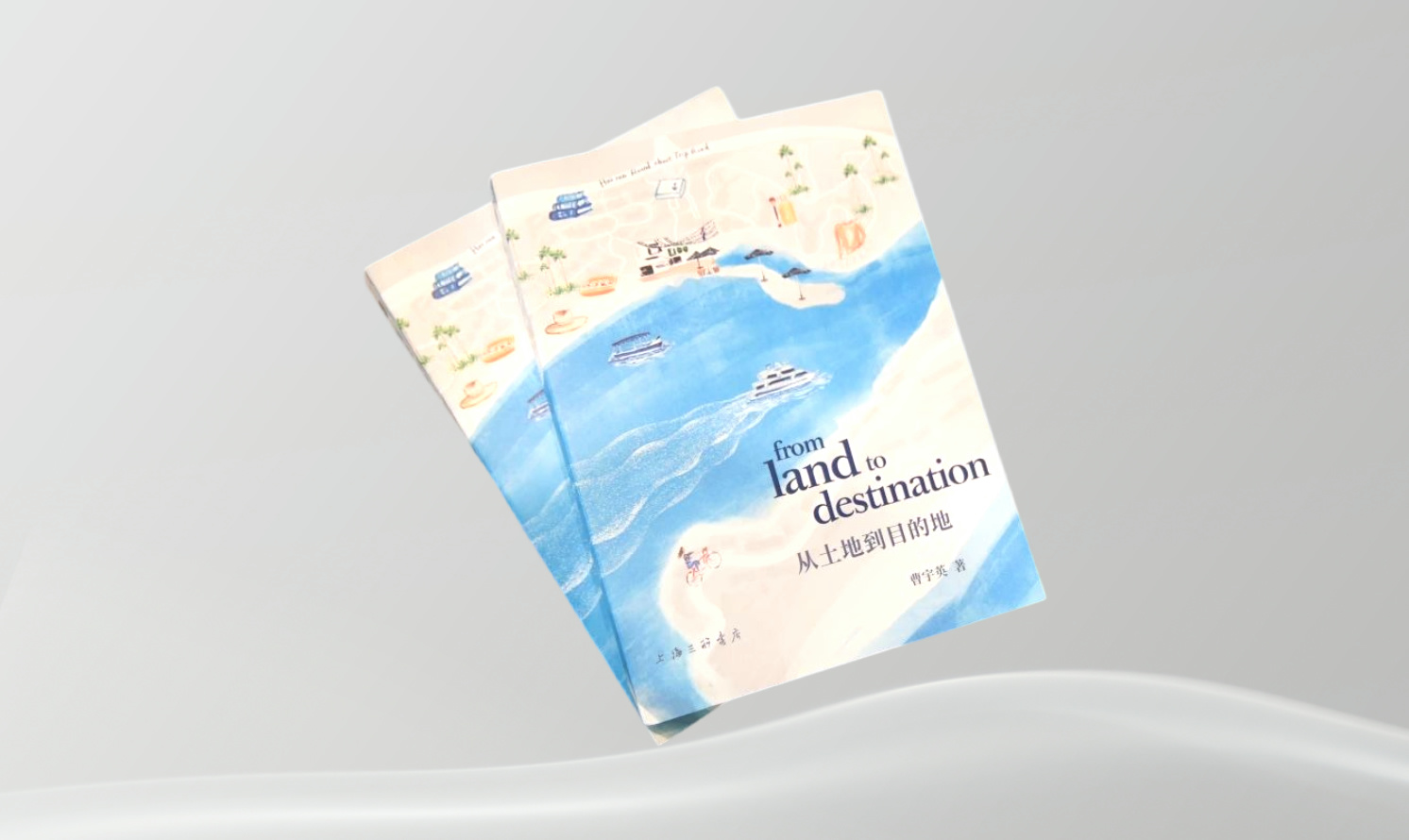控制與不確定性:對(duì)原型思維范式的展望
Control and Uncertainty: Towards a Paradigm of Prototyping
作者:張子豪�����,劉潯 ZHANG Zihao, LIU Xun
摘要
本文探索了一種不同于模型設(shè)計(jì)的原型思維新范式。在將控制論與景觀設(shè)計(jì)進(jìn)行并置分析后發(fā)現(xiàn)��,自20世紀(jì)至21世紀(jì)初��,景觀設(shè)計(jì)學(xué)科的發(fā)展規(guī)律反映了控制論在同一時(shí)期的發(fā)展進(jìn)程���。早期關(guān)于系統(tǒng)動(dòng)力學(xué)的決定論和線性理解�����,逐漸被基于演生論和開放式的主張所取代�����。在演生論的框架下,筆者強(qiáng)調(diào)一類可被理解為原型的特殊模型不能被基于“建模-預(yù)測-控制”的傳統(tǒng)框架所包容�。原型并不像傳統(tǒng)建模過程那樣,用模型代表一個(gè)開放的生命系統(tǒng)��,原型本身就可以被理解為一個(gè)獨(dú)立的生命體系�。原型思維可以取代模型設(shè)計(jì),并展現(xiàn)出三方面的特質(zhì):1)原型本身即具有“生命力”�����,這是設(shè)計(jì)與創(chuàng)造力的根本;2)原型的真正意義在于其未被定義的狀態(tài)�����,而不在于其可被定義的最直接的用途�����;3)這種未被定義的狀態(tài)能夠提供無限可能�����,并將人們與未來之間的關(guān)系從過去的偶然性和預(yù)測轉(zhuǎn)變?yōu)槠诖c展望�����。
關(guān)鍵詞
原型�����;景觀��;控制論���;系統(tǒng)思維��;不確定性�;控制
Abstract
This paper maps out a new paradigm of prototyping that acts as an alternative to the model-making paradigm. By juxtaposing the cybernetics movement with landscape design, the authors have mapped out a development in landscape discourse that mirrors the movement of cybernetics in the 20th century and early 21st century. The early deterministic and linear understanding of systems dynamics is replaced by an emergent and open-ended view. Taking on a framework of emergence, the authors highlight a special type of model that does not fit within the conventional model-predict-control framework. Rather than models that represent another living system, these models are living systems in themselves with autonomy and lives. This special type of model can be understood as prototypes. Prototyping replaces model-making and exhibits three distinctive qualities: 1) A prototype has a life of its own, which serves as the basis for design and creativity; 2) The real usefulness of a prototype lies in its undefined identity rather than its defined and direct application; And 3) the identified quality provides a wide range of possibilities, thus changing our relationship with the future from chance and prediction to anticipation and hope.
Keywords
Prototype; Landscape; Cybernetics; Systems Thinking; Uncertainty; Control
身體經(jīng)驗(yàn)與時(shí)空想象——基于場地、場景���、場域的景觀建構(gòu)原型研究
Physical Experience and Space-Time Imagery—Research on The Prototype of Landscape Design by Understanding Site, Sight, and Insight
作者:魏方���, 黃子艦 WEI Fang, HUANG Zijian
摘要
當(dāng)代景觀作為抵抗環(huán)境同質(zhì)化、提供豐富文化想象力的重要媒介��,對(duì)身體體驗(yàn)的忽視更易造成人與環(huán)境之間的感知矛盾與割裂�����。本文提出將身體-時(shí)間-空間的關(guān)系原型作為研究基于差異性要素建構(gòu)的場地�、場景、場域三種設(shè)計(jì)維度的抽象話語��,分別表征為物質(zhì)建構(gòu)��、意義建構(gòu)和場域建構(gòu)�;隨后探討了如何通過控制空間序列與內(nèi)外向��、閾的設(shè)置、文本與句法的建構(gòu)�、激發(fā)事件與社會(huì)想象力等具體施行路徑的作用,構(gòu)成物質(zhì)空間中的推拉運(yùn)動(dòng)��、意義空間中的側(cè)顯與完形�����、場域空間的統(tǒng)覺��,從而加深人對(duì)景觀空間的感知����。本文以身體經(jīng)驗(yàn)與時(shí)空想象為切入點(diǎn),提取并梳理了不同維度的景觀建構(gòu)思維��,認(rèn)為合理的差異要素組織設(shè)計(jì)方式可以通過以上三元維度建立深刻且親密的人地關(guān)系���。
關(guān)鍵詞
體驗(yàn)景觀�;原型��;時(shí)間-空間�����;閾;社會(huì)互動(dòng)�����;景觀構(gòu)建
Abstract
Contemporary landscape is an important medium that resists the environmental homogeneity and diversifies the cultural imagery. The neglect of physical experience would intensify the perception contradiction and separation between people and the site. This paper proposes to use the prototype of the interactions between the body, time, and space to build an abstract discourse to study the design dimensions of site, sight, and insight based on different elements—the three dimensions are represented as perception, conception, and live. It then focuses on how to employ design methods (including the arrangement of spatial sequence and direction, the design of thresholds in the space, the creation of texts and syntaxes, and the stimulation of events and social imagery) to form the push-pull movement in the material space, the abschattung and gestalt of ideographic texts in the meaning space, and the apperception of the social field, so as to enhance people’s perception of the landscape. This paper studies physical experience and space-time imagery to extract and deduce the thinking of landscape design within varied dimensions, and argues that a profound and intimate relationship between man and the site can be established by organizing different elements under the ternary system of site, sight, and insight.
Keywords
Experiencing Landscape; Prototype; Space-Time; Threshold; Social Interaction; Landscape Design
運(yùn)用空間句法衡量小型城市公園的安全性——以埃及開羅市羅德-法拉格公園為例
Space Syntax as a Tool to Measure Safety in Small Urban Parks—A Case Study of Rod El Farag Park in Cairo, Egypt
作者:諾哈?艾哈邁德?阿卜杜勒?阿齊茲 Noha Ahmed Abd El AZIZ
摘要
數(shù)十年來����,厘清犯罪行為及其發(fā)生場所之間的關(guān)系一直是設(shè)計(jì)和社會(huì)領(lǐng)域的研究重點(diǎn)。盡管空間句法理論為研究環(huán)境的布局特征及其對(duì)人們活動(dòng)與犯罪方式的潛在影響提供了有力支持����,其在景觀設(shè)計(jì)中的運(yùn)用卻仍然較少。本研究借助空間句法理論����,使用depthmapX軟件分析了埃及開羅市一座公園的空間布局并預(yù)測了其安全水平,以期填補(bǔ)這一空白��。研究通過現(xiàn)場觀察和采訪公園工作人員收集了該公園2019年的犯罪記錄�����,并運(yùn)用ArcGIS 10.3軟件對(duì)其進(jìn)行分析���。結(jié)果表明����,空間深度���、整合度�����、連接度和犯罪模式分布之間存在較強(qiáng)的相關(guān)性����。公園的可見性分析圖則顯示了夏季和冬季植被(常綠喬木/落葉喬木)對(duì)視覺連接度和犯罪類型的不同影響��。研究指出�����,將空間句法理論應(yīng)用于景觀設(shè)計(jì)仍面臨挑戰(zhàn)�����,但該方法在預(yù)測城市公園犯罪情況方面具有較大潛力�����。此類研究結(jié)果可為改進(jìn)公園的概念設(shè)計(jì)提供參考,以創(chuàng)造更安全的公園環(huán)境��。
關(guān)鍵詞
CPTED����;空間句法;開羅公園��;安全公園����;depthmapX軟件;環(huán)境設(shè)計(jì)
Abstract
Decoding the relationship between crime and place has been the focus of researchers in both design and social fields for a few decades. Space syntax theory offers the possibility of examining the configuration characteristics of the environment and their potential influences on people’s activities and crime patterns; however, its implementation in landscape architecture has been limited. This study responds to such a gap by exploring the effectiveness of applying space syntax theory to predict safety levels in a park in Cairo, Egypt. depthmapX was used to analyze the spatial configuration of the park. Crime records from 2019 were collected through site observation and staff interviews, and analyzed using ArcGIS 10.3 software. Results indicated a strong correlation between space depth / integration / connectivity and crime pattern distribution. The park visibility graphs indicated the different impacts of vegetation (evergreen tree / deciduous trees) in summer and winter on visual connectivity and crime types. The research concluded that applying space syntax theory to landscape architecture is challenging; nevertheless, it represents a promising approach to predict committing crimes in urban parks, and the findings can be adopted to enhance park conceptual designs to achieve higher safety level.
Keywords
CPTED; Space Syntax; Cairo’s Parks; Safe Parks; depthmapX; Environmental Design
古村落宅間元素的分類及其平面特征解讀——以安徽省黃山市關(guān)麓村為例
Categorization of the Spatial Elements between Courtyards in Historical Villages and Interpretation of Their Morphological Characteristics—A Case Study on Guanlu Village in Huangshan City, Anhui Province
作者:王國偉�����,羅杰威 WANG Guowei, Paolo Vincenzo GENOVESE
摘要
宅間元素是古村落景觀的重要組成部分�����。在鄉(xiāng)村景觀同質(zhì)化的當(dāng)下����,現(xiàn)有地方元素的研究傾向于傳統(tǒng)符號(hào)或建筑細(xì)部等����,而較少關(guān)注構(gòu)成古村落宅間平面形態(tài)的核心元素�。本文以安徽省黃山市關(guān)麓村為例���,梳理了28種古村落宅間元素的分類����,繪制了相應(yīng)的元素圖式���,并從面積����、圓形度���、矩形度�����、緊湊度和寬長比5個(gè)方面量化分析了元素的平面特征�。本研究不僅有益于細(xì)化古村落平面形態(tài)的理論研究����,還有助于促進(jìn)地方元素的挖掘及應(yīng)用�。這一基于元素分類���、圖式及其平面特征量化分析的方法模型為以延續(xù)地域特征為目的的村落景觀平面設(shè)計(jì)提供了客觀依據(jù)����,同時(shí)豐富了村落景觀設(shè)計(jì)語匯���,避免設(shè)計(jì)元素模塊化和千村一面等現(xiàn)象���。
關(guān)鍵詞
古村落;宅間元素����;設(shè)計(jì)元素;景觀�����;平面特征���;設(shè)計(jì)語匯�;關(guān)麓村
Abstract
Spatial elements between courtyards are an important component of the landscape of historical villages. With an increasingly homogenous rural landscape in China, most existing studies focus on traditional symbols and architectural details, while little research is conducted to explore the core elements that shape the spaces between village courtyards. Taking Guanlu Village in Huangshan City, Anhui Province as an example, the research team identified 28 sorts of spatial elements, developed the corresponding diagrams, and quantified their morphological characteristics in area, circularity, rectangularity, compactness, and width-length ratio. This research not only contributes to the theoretical development on the morphology of ancient villages, but also helps promote the exploration and application of local elements. This village landscape design model constituted with element categorization, diagram drawing, and morphological quantitative analysis would provide scientific evidences that help inform the practices to revitalize village localities, showing its practical significance of enriching the design vocabulary of village landscapes and avoiding the prevailing, generic usage of modular designs with urban landscape elements.
Keywords
Historical Village; Spatial Element between Courtyards; Design Elements; Landscape; Morphological Characteristics; Design Vocabulary; Guanlu Village
療愈性街景元素識(shí)別與評(píng)價(jià)研究
An Explorative Study on the Identification and Evaluation of Restorative Streetscape Elements
作者:殷雨婷,邵鈺涵�����,薛貞穎��,凱文?斯韋茨����,張克新 YIN Yuting, SHAO Yuhan, XUE Zhenying, Kevin THWAITES, ZHANG Kexin
摘要
街道作為一種重要的城市公共空間�����,療愈潛能是其社會(huì)價(jià)值的體現(xiàn)之一�����。本研究從注意力恢復(fù)理論出發(fā)�,以其提出的療愈性環(huán)境的4個(gè)特征因子—“遠(yuǎn)離性”“延展性”“迷人性”“兼容性”為依據(jù),闡明了街道空間具有療愈性對(duì)于高密度城市環(huán)境中居民的重要意義�。研究通過將傳統(tǒng)的療愈性量表問卷與移動(dòng)式眼動(dòng)儀相結(jié)合,了解使用者在城市街道環(huán)境中能夠獲得的療愈性體驗(yàn)����,并識(shí)別出與療愈性相關(guān)的街景元素��,用以探究不同元素對(duì)人們療愈性體驗(yàn)的影響程度��。研究結(jié)果表明�����,“綠植”“人”“汽車”等是顯著影響街道使用者療愈體驗(yàn)的街景元素��。此外���,不同街景元素對(duì)療愈環(huán)境4個(gè)特征因子的影響程度也不盡相同,如:對(duì)于遠(yuǎn)離性��、延展性和迷人性三個(gè)維度來說���,“綠植”的影響最為重要�;而對(duì)于兼容性維度來說�,“人”是核心影響因素。研究結(jié)果可為歸納提升街道療愈性的設(shè)計(jì)導(dǎo)則提供參考��,并幫助專業(yè)人員依據(jù)不同類型街道的療愈性側(cè)重點(diǎn)制定具有針對(duì)性的設(shè)計(jì)改善思路�����。
關(guān)鍵詞
療愈性;街景元素���;感知評(píng)價(jià)量表��;移動(dòng)式眼動(dòng)儀��;注意力恢復(fù)理論
Abstract
The street is a type of important urban public space with multiple social values, one of which is the restorative potential. Based on the “being-away,” “extent,” “fascination,” and “compatibility” constructs of restorative environments proposed by the Attention Recovery Theory, this study elaborated the significance of restorativeness provided by street environments to people living in high-density cities. It used the traditional restorativeness scale with mobile eye trackers to explore the restorative experience provided by an urban street, and identified the specific streetscape elements related to restorativeness and the degree of their influences. The results show that “greenery,” “people,” and “cars” perform significant influences, and different streetscape elements have different degrees of influences on the 4 constructs of the restorative environment. For example, for the “being-away,” “extent,” and “fascination” constructs, the influence of “greenery” is the most important, while “people” plays the core role in “compatibility.” The findings can help professionals develop targeted design strategies to improve diverse street environments for a better restorativeness.
Keywords
Restorativeness; Streetscape Elements; Perception Evaluation Scale; Mobile Eye Tracker; Attention Recovery Theory
原型思維在廣義建成景觀中的設(shè)計(jì)應(yīng)用
Prototyping in the Design of Built Landscapes
作者:李靜蕓���,董華冠,姜佳怡 LI Jingyi, DONG Huaguan, JIANG Jiayi
摘要
“原型”起源于“本質(zhì)主義”—認(rèn)為萬物均擁有其客觀存在的本質(zhì)�,人們可以對(duì)典型現(xiàn)象進(jìn)行抽象���、描述并揭示該事物的本質(zhì)���。在建筑學(xué)發(fā)展過程中,由于本質(zhì)主義無法描述形態(tài)變體的差異性��,因而產(chǎn)生了類型學(xué)的概念���。類型學(xué)強(qiáng)調(diào)對(duì)建筑形式進(jìn)行變化和組合��,形成與歷史��、文化或環(huán)境具有內(nèi)在聯(lián)系的新的空間形式��。而在景觀領(lǐng)域��,面對(duì)復(fù)雜多變的設(shè)計(jì)對(duì)象�,自類型學(xué)衍化而來的原型概念由于包含時(shí)間維度而被更廣泛應(yīng)用?����?梢哉f�����,原型思維是一種空間秩序的描述及測試���,從提取特征��、確定形式���、測試模擬,到最終引入實(shí)體空間�,形成了“抽象-衍化-測試-結(jié)果”的設(shè)計(jì)方法。在景觀都市主義語境下,設(shè)計(jì)者首先必須了解場地的特定文脈�,了解過去和未來及使用人群的設(shè)計(jì)語言,而后進(jìn)行原型推演�����,并將時(shí)間性納入考慮��。本文主要探討了原型概念的演化過程��,并進(jìn)一步討論原型思維在廣義建成景觀設(shè)計(jì)過程的三個(gè)階段——研究設(shè)計(jì)對(duì)象�����、推敲設(shè)計(jì)策略及測試最優(yōu)策略——中起到的作用���。
關(guān)鍵詞
原型思維;建成景觀����;切片;情境分析��;模擬
Abstract
The concept of “prototype” originated from "essentialism"—the theory holds that everything is found in its own pure realm that can be typically abstracted, described, and represented. In the development of Architecture, essentialism fails to describe the differences between formal variations, and then Typology was born which manifests the new spatial forms that are embedded within the historical, cultural, and environmental contexts through the changes and combinations of architecture. Prototype, stemming from Typology, highlights the qualities of the time dimension and has been broadly used in the field of landscape architecture to address the objects that are often complex and chaotic. Prototyping is to profile and test the spatial order and characterized by a process of “extraction–deduction–test–outcome”: through the scenario analysis upon understanding and perception of the site, the design extracts the elements, deduces the forms, tests the simulations, iterates the strategies, and finally realizes the outcome physically. In the discourse of Landscape Urbanism, designers must understand the specific material language of the site, the design language of the site’s history (past and future), and the design language of the human activities proposed, while considering the changes over time. This article primarily reviews the evolution of the concept of prototype, and discusses its role in benefiting the design of built landscapes, ranging from the design investigation to the conceiving and testing of design strategies.
Keywords
Prototyping; Built Landscape; Site Section; Scenario Analysis; Simulation
城市綠地促進(jìn)人群健康的作用途徑:理論框架與實(shí)踐啟示
Impact Mechanism of Urban Green Spaces in Promoting Public Health: Theoretical Framework and Inspiration for Practical Experiences
作者:張金光�,余兆武,趙兵 ZHANG Jinguang, YU Zhaowu, ZHAO Bing
摘要
城市綠地不僅可以提供廣泛的生態(tài)系統(tǒng)服務(wù),也能提升人群健康�。當(dāng)前,已有大量研究論述了城市綠地與人群健康的關(guān)系并取得了諸多進(jìn)展����,但尚缺少對(duì)兩者復(fù)雜潛在作用途徑的探討。本文首先論述了城市綠地對(duì)人群健康的積極與消極影響�,其次從鼓勵(lì)體力活動(dòng)、緩解精神壓力��、提高社會(huì)凝聚力和提供生態(tài)系統(tǒng)調(diào)節(jié)/支持服務(wù)4個(gè)方面構(gòu)建了城市綠地促進(jìn)人群健康的作用途徑理論框架����。在此框架研究基礎(chǔ)上初步提出了健康導(dǎo)向下的城市綠地系統(tǒng)規(guī)劃應(yīng)對(duì)策略,具體包括:1)提升城市綠地的可獲得性�����;2)提高城市綠地的可達(dá)性�;3)增強(qiáng)城市綠地的可視性;4)優(yōu)化城市綠地的空間要素組成�;5)構(gòu)建網(wǎng)絡(luò)狀城市綠地空間格局;6)降低城市綠地對(duì)人群健康的消極影響����。研究成果可為人群健康和城市可持續(xù)發(fā)展提供有效的理論基礎(chǔ)和經(jīng)驗(yàn)啟示,讓有限的城市綠地發(fā)揮更大的健康效益。
關(guān)鍵詞
人群健康����;城市綠地;基于自然的解決方案����;生態(tài)系統(tǒng)服務(wù);城市綠地系統(tǒng)規(guī)劃
Abstract
Urban green spaces can not only offer a wide range of ecosystem services, but also promote public health. Most of existing studies have effectually explored the correlation between urban green spaces and public health, but failed to dig the complex impact mechanism behind. This article firstly goes into the positive and negative impacts of urban green spaces on public health, and proposes a theoretical framework of the impact mechanism from perspectives of physical activity encouragement, stress management, social cohesion enhancement, and regulating / supporting services provision by ecosystems. On this basis, 6 health-oriented urban green space system planning strategies are proposed, including promoting the availability, improving the accessibility, enhancing the visibility, optimizing the spatial composition, constructing a network pattern of urban green spaces, and reducing the negative impacts of urban green spaces on public health. The research results can provide theoretical grounding and reference for public health promotion and sustainable urban development to exert more health benefits with limited urban green spaces.
Keywords
Public Health; Urban Green Spaces; Nature-Based Solutions; Ecosystem Services; Urban Green Space System Planning
區(qū)域“脊柱”太浦河:基于原型設(shè)計(jì)的國土空間規(guī)劃補(bǔ)充途徑
Taipu Canal as a Regional Spine: A Prototypical Approach to Territorial Planning
作者:謝雨婷��,克里斯蒂安?諾爾夫���,董楠楠����,戴代新��,張斗 XIE Yuting, Christian NOLF, DONG Nannan, DAI Daixin, ZHANG Dou
摘要
2018年以來���,長江三角洲區(qū)域一體化發(fā)展上升為國家戰(zhàn)略,以加強(qiáng)該區(qū)域城市間的協(xié)作��,但目前開放空間的保護(hù)與規(guī)劃途徑以定量評(píng)價(jià)為主�,依然沿用自上而下的控制性規(guī)劃導(dǎo)則。太浦河流經(jīng)上海、蘇州和杭州之間的區(qū)域綠心��,目前主要發(fā)揮工程功能�����。本設(shè)計(jì)研究項(xiàng)目提出將太浦河升級(jí)為串聯(lián)公民生活的軸線���,制定新的區(qū)域發(fā)展框架����,并使其串聯(lián)沿線多樣化的開放空間��、生態(tài)系統(tǒng)和歷史水鄉(xiāng)古鎮(zhèn)�����。項(xiàng)目采用了跨尺度的“地情-原型”方法�����,整合樣本圖繪���、類型學(xué)研究和實(shí)驗(yàn)場地的原型設(shè)計(jì)探索�,并將其貫穿于各個(gè)尺度,以評(píng)估如何將原型設(shè)計(jì)策略歸納為系統(tǒng)性的規(guī)劃導(dǎo)則�,并在區(qū)域尺度進(jìn)行統(tǒng)一實(shí)施。本文總結(jié)的這種原型設(shè)計(jì)途徑為中國自上而下的國土空間規(guī)劃體系提供了適當(dāng)補(bǔ)充���,以更好地應(yīng)對(duì)愈加復(fù)雜的場地條件和更大尺度的空間規(guī)劃需求��。
關(guān)鍵詞
原型�;設(shè)計(jì)研究�����;景觀特征���;景觀基礎(chǔ)設(shè)施�����;國土空間規(guī)劃�;長江三角洲一體化���;江南公園
Abstract
Since 2018, the integrated regional development of the Yangtze River Delta has been subjected as a national strategy to intensify the interconnection between its cities. However, the questions of open space conservation and planning have so far remained essentially quantitative and strongly informed by regulatory and top-down principles. Focusing on the vast green heart between Shanghai, Suzhou, and Hangzhou, this design-driven research project hypothesizes that Taipu Canal can be upgraded from its current technical role into a civic spine that frames new developments and articulates the rich diversity of open spaces, ecosystems, historic water towns and villages. The research adopts a cross-scale method of “contextual prototypes” that combines sampling, typological classification, and prototypical design explorations in pilot projects. A reflective phase zooms out to critically assess how these prototypical strategies can be systemized as structuring principles at the regional scale. The conclusion of the article discusses how this prototypical approach offers an opportunity to inductively complement the top-down Chinese territorial planning system, which needs to cope with increasingly complex conditions and vaster scales.
Keywords
Prototype; Research-by-Design; Landscape Characteristics; Landscape Infrastructure; Territorial Planning; Yangtze River Delta Integration; Jiangnan Park
促進(jìn)社區(qū)設(shè)計(jì)和管理中的參與性行動(dòng):泰國昂西拉地區(qū)集體智能數(shù)字平臺(tái)
Enabling Participatory Actions in Community Design and Management: A Collective Intelligent Digital Platform in Ang Sila, Thailand
作者:戎航���,楊竣程,錢經(jīng)緯 Helena H. RONG, YANG Juncheng, William Jingwei QIAN
摘要
過去10年間�����,隨著數(shù)據(jù)收集�、計(jì)算機(jī)技術(shù)及可視化方法的發(fā)展,“可持續(xù)智慧城市”這一旨在運(yùn)用數(shù)字技術(shù)解決各類城市問題的新興概念逐漸得到推廣���。然而���,早期的方法忽略了公眾參與決策過程的重要性,導(dǎo)致社會(huì)個(gè)體與專家權(quán)威之間信息不對(duì)稱��,弱勢(shì)群體的代理權(quán)日益萎縮�����。本文介紹了由研究團(tuán)隊(duì)所設(shè)計(jì)的“共同設(shè)計(jì)昂西拉”(CoDAS)這一公民參與數(shù)字平臺(tái)和工作流程:這個(gè)工具可以促進(jìn)民眾和專家權(quán)威在項(xiàng)目的各個(gè)階段中持續(xù)溝通�。通過讓眾多利益相關(guān)者作為共同創(chuàng)作者參與到設(shè)計(jì)過程之中,CoDAS可以提高不同群體之間的溝通效率�,并實(shí)現(xiàn)設(shè)計(jì)和開發(fā)結(jié)果的公平及項(xiàng)目建成后使用階段的公共資源管理。研究團(tuán)隊(duì)就泰國一個(gè)歷史悠久的漁村—昂西拉附近的一處新開發(fā)項(xiàng)目展開了場地設(shè)計(jì)實(shí)驗(yàn)����,對(duì)這一構(gòu)想進(jìn)行了驗(yàn)證��。
關(guān)鍵詞
集體智慧�;城市設(shè)計(jì)��;城市治理�����;社區(qū)營造�����;可持續(xù)智慧城市��;社區(qū)平臺(tái)����;數(shù)字應(yīng)用
Abstract
Advancements in data collection, computing, and visualization methods have given rise to a new form of urban concept over the last decade: the smart sustainable city which tackles various urban challenges with digital technologies. However, earlier approaches omit the importance of citizens’ involvement in decision-making processes, which leads to an imbalanced information asymmetry between individuals and authorities and an increasingly reduced agency for the vulnerable. In this article, a tool and process was proposed which integrates the voices of evolving self-organizing entities to solve collective action challenges: Named as CoDAS (Co-Design Ang Sila), it is a digital platform which facilitates continuous communication between citizens and authorities during different development phases of a given project. By including a large number of stakeholders to participate in the co-design process as co-creators, CoDAS aims to improve communication efficiency while achieving equitable outcomes in design and development, along with post-occupancy common resource management. To test this hypothesis, a site design experiment was conducted on a site near a historical fishing village of Ang Sila, Thailand.
Keywords
Collective Intelligence; Urban Design; Urban Governance; Community Building; Smart Sustainable City; Community Platform; Digital Application
路緣沉積:利用原型思維過程探究如何通過路緣及路肩設(shè)計(jì)截留暴雨中的路面污染物
Curbing Sediment: A Prototyping Process to Explore How to Capture Road Pollutants in Stormwater Events via Curb and Apron Redesign
作者:哈麗娜?斯坦納,瑞恩?溫斯頓���,艾薇?歐貝爾���,亞力克?格林姆 Halina STEINER, Ryan WINSTON, Avee OABEL, Alec GRIMM
摘要
路緣的設(shè)計(jì)簡單明了:路緣本身為雨水提供了輸送途徑,促使水和污染物由街道匯入河道。路面上存積著各種沉積物���,包括草坪肥料中的營養(yǎng)物質(zhì)�����、細(xì)菌、病毒����、殺蟲劑、金屬元素����,以及各種油和油脂。當(dāng)暴雨發(fā)生時(shí)����,這些物質(zhì)會(huì)在未經(jīng)處理的情況下被沖入雨水管道,而后排入河道����,進(jìn)而影響水質(zhì)乃至整個(gè)生態(tài)系統(tǒng)。那么���,如何通過提升路緣設(shè)計(jì)標(biāo)準(zhǔn)來產(chǎn)生更大的系統(tǒng)性影響���?
如果重新設(shè)計(jì)路緣���,使其可以像磁石一樣吸附雨水中的污染物,則將打破路緣固有的設(shè)計(jì)標(biāo)準(zhǔn)��。2019年夏��,一支跨學(xué)科研究團(tuán)隊(duì)在俄亥俄州立大學(xué)對(duì)標(biāo)準(zhǔn)混凝土路緣及路肩的替代方案進(jìn)行了測試����。該團(tuán)隊(duì)使用迭代設(shè)計(jì)過程在路緣和路肩表面增加了不同的圖案和凹槽,并使用全尺寸模型測試了模擬暴雨事件�����,收集了相關(guān)數(shù)據(jù)以評(píng)估21種替代設(shè)計(jì)方案的表現(xiàn)����。結(jié)果表明,新的路緣及路肩組合設(shè)計(jì)方案可以有效地在道路上攔截污染物���,避免其進(jìn)一步危害水體及水生生態(tài)系統(tǒng)����。
關(guān)鍵詞
基礎(chǔ)設(shè)施;水文學(xué)����;雨洪;路緣��;沉積物����;城市設(shè)計(jì)
Abstract
The design of a curb is straight forward. The curb itself provides a conveyance of stormwater, facilitating the movement of water and pollutants from the street into waterways. Pollutants such as sediment, nutrients from lawn fertilizers, bacteria, viruses, pesticides, metals, and petroleum by-products accumulate on the road surface and are released during storm events, carried to storm drains, and deposited into waterways, often without treatment. Once pollutants enter the waterways they impact the ecosystem and affect water quality. How can discrete standards—like a curb—be leveraged to have larger systemic impacts?
The redesign of the curb to perform as a magnet for pollutants can challenge this design standard. During the summer of 2019, the interdisciplinary research team tested alternatives to the standard concrete curb and apron at Ohio State University. The team used an iterative design process to add patterning and crenellations to the face of the curb and apron. Using full scale models to test simulated storm events, the team collected data to evaluate the performance of 21 alternative designs. The results suggest the new combined curb and apron designs can abstract pollutants from roadways before they are detrimental to water bodies and aquatic ecosystems.
Keywords
Infrastructure; Hydrology; Stormwater; Curb; Sediment; Urban Design
響應(yīng)式生物修復(fù):規(guī)范海南沿海開發(fā)的不確定性��、評(píng)價(jià)及調(diào)和
Responsive Bioremediation: Regulating the Uncertainty, Assessment, and Negotiation for Coastal Developments in Hainan, China
作者:郭小曼 KWOK Siu Man
摘要
填海造地和疏?����;顒?dòng)會(huì)損害海洋和沿海生態(tài)�。本研究理性分析了獲批的環(huán)境影響評(píng)價(jià)中存在的沖突點(diǎn),包括對(duì)沿海和海洋生境所受直接及間接影響的忽視�,環(huán)評(píng)流程中的漏洞,以及海洋環(huán)境修復(fù)方案的缺陷��,旨在使利益相關(guān)者更好地了解填海造地對(duì)海洋和沿海生態(tài)系統(tǒng)造成的直接及間接影響����,以促使其遵循合理的環(huán)評(píng)流程�����,并實(shí)施響應(yīng)式海洋生物修復(fù)方案����。研究以中國海南?���;◢u為例,通過在疏浚之前及過程中應(yīng)用響應(yīng)式牡蠣-海草-珊瑚濾床系統(tǒng)�����,使周邊海域的水濁度和懸沙濃度保持在珊瑚礁的耐受范圍之內(nèi)��。
關(guān)鍵詞
填海造地��;疏浚�����;環(huán)境影響評(píng)價(jià)�;海洋生物修復(fù)�;響應(yīng)式原型����;牡蠣-海草-珊瑚濾床系統(tǒng)
Abstract
Land reclamation and dredging have a damaging effect on marine and coastal ecology. This study rationally analyzes the conflicts in the approved environmental impact assessment (EIA), including the negligence of the direct and indirect effects on coastal and marine habitats, the short circuit of the EIA procedures among stakeholders, and the insufficient marine environmental restoration schemes. This study also promotes awareness among the stakeholders so they will understand the direct and indirect effects of land reclamation on marine and coastal ecosystems, as well as the indications if they follow the EIA procedures, and implement a responsive marine bioremediation before and during the dredging process. By taking the Ocean Flower Island in Hainan, China as an example, this study applied the responsive oyster-seagrass-coral filtration bed system before and during the dredging process to maintain the water turbidity and suspended sediment concentration below the tolerance limits of the coral reefs in the adjacent areas.
Keywords
Land Reclamation; Dredging; Environmental Impact Assessment; Marine Bioremediation; Responsive Prototype; Oyster-Seagrass-Coral Filtration Bed System
大地舞臺(tái):面向未來的廢棄土地修復(fù)
Earth Choreographer: Remediating Obsolete Grounds of the Future
作者:安娜?科爾尼瓦,厄爾瑪克?圖蘭里 Anna KORNEEVA, Irmak TURANLI
摘要
作為一種設(shè)計(jì)方法��,“大地舞臺(tái)”聚焦于廢棄油田景觀的規(guī)劃設(shè)計(jì)與功能重構(gòu)��。本文所介紹的項(xiàng)目以此方法命名��,探討了廢棄工業(yè)用地修復(fù)和再利用的迫切需求與機(jī)遇�����,以在未來幾十年間—乃至工業(yè)用地達(dá)到預(yù)期使用年限后—不斷發(fā)掘土地的開發(fā)潛力�����,制定相應(yīng)的預(yù)景����,并在設(shè)計(jì)過程中保留場地和景觀曾遭受破壞的痕跡�����。在技術(shù)不斷發(fā)展、自然資源危機(jī)日益加劇的背景下�����,本文回答了以下問題:1)生產(chǎn)性景觀的“一手保護(hù)�,一手重建”意味著什么?2)如何描繪一個(gè)不斷被機(jī)械重塑的地平面�,以及隨之變化的人類與非人類活動(dòng)區(qū)域的邊界?3)一片不斷自我消解和重建的場地是什么樣�?
該項(xiàng)目采用動(dòng)態(tài)設(shè)計(jì)方法提出了2025~2080年的若干預(yù)景設(shè)計(jì),使場地能夠根據(jù)不斷變化的使用者需求和利益取向持續(xù)發(fā)展�����,回應(yīng)氣候變化和資源枯竭危機(jī)���,為廢棄景觀的改造和復(fù)興提供原型參考����。
關(guān)鍵詞
石油開采���;廢棄景觀���;修復(fù)��;再利用��;原型����;夯土
Abstract
Earth Choreographer is a design methodology that focuses on choreographing, scoring, and de-territorializing the landscape of an obsolete oil field. The project introduced in this article, titled Earth Choreographer, explores the imperatives and opportunities in remediation and repurposing of obsolete industrial sites, aiming to continuously investigate the potential of the land and possible scenarios over decades—even when the intended life cycle of the industrial site is over. It presents a design process that recognizes the ruination of the ground and the landscape. By acknowledging the evolving technologies and ever-increasing preoccupation with natural resources, it answers the following questions: 1) What happens when a productive landscape is sought to be both partially preserved and recreated? 2) How to represent a ground plane that is being constantly reconfigured by machines with ever-changing boundaries of spaces for human and non-human occupation? And 3) what does a site that constantly erases and reconstructs itself look like?
With several scenarios from 2025 to 2080, this project acts as a prototype for inhabiting obsolete landscapes by addressing climate change and depletion of resources. Its dynamic design methodology allows the site to constantly evolve and change over time based on the needs and interests of its occupiers.
Keywords
Oil Extraction; Obsolete Landscape; Remediation; Repurposing; Prototype; Rammed Earth
 京公海網(wǎng)安備 110108000058號(hào)
京公海網(wǎng)安備 110108000058號(hào)
